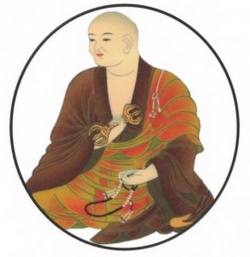Difference between revisions of "Heian period"
(Created page with "thumb|250px| Heian period The Heian period (平安時代 Heian jidai) is the last division of classical Japanese history, run...") |
|||
| Line 2: | Line 2: | ||
[[Heian period]] The [[Heian period]] ([[平安時代]] [[Heian jidai]]) is the last division of classical [[Japanese]] history, running from 794 to 1185 A.D.[1] The period is named after the {{Wiki|capital city}} of Heian-kyō, or {{Wiki|modern}} [[Kyōto]]. It is the period in [[Japanese]] history when [[Buddhism]], [[Taoism]] and other {{Wiki|Chinese}} [[influences]] were at their height. The [[Heian period]] is also considered the peak of the [[Japanese]] {{Wiki|imperial court}} and noted for its [[art]], especially [[poetry]] and {{Wiki|literature}}. Although the {{Wiki|Imperial}} House of [[Japan]] had power on the surface, the real power was in the hands of the [[Fujiwara clan]], a powerful {{Wiki|aristocratic}} family who had intermarried with the {{Wiki|imperial}} family. Many [[emperors]] actually had mothers from the [[Fujiwara]] family. [[Heian]] ([[平安?]]) means "[[peace and tranquility]]" in [[Japanese]]. | [[Heian period]] The [[Heian period]] ([[平安時代]] [[Heian jidai]]) is the last division of classical [[Japanese]] history, running from 794 to 1185 A.D.[1] The period is named after the {{Wiki|capital city}} of Heian-kyō, or {{Wiki|modern}} [[Kyōto]]. It is the period in [[Japanese]] history when [[Buddhism]], [[Taoism]] and other {{Wiki|Chinese}} [[influences]] were at their height. The [[Heian period]] is also considered the peak of the [[Japanese]] {{Wiki|imperial court}} and noted for its [[art]], especially [[poetry]] and {{Wiki|literature}}. Although the {{Wiki|Imperial}} House of [[Japan]] had power on the surface, the real power was in the hands of the [[Fujiwara clan]], a powerful {{Wiki|aristocratic}} family who had intermarried with the {{Wiki|imperial}} family. Many [[emperors]] actually had mothers from the [[Fujiwara]] family. [[Heian]] ([[平安?]]) means "[[peace and tranquility]]" in [[Japanese]]. | ||
{{W}} | {{W}} | ||
| − | [[Category:Japanese | + | [[Category:Japanese Buddhist History]] |
Revision as of 15:17, 7 April 2014
Heian period The Heian period (平安時代 Heian jidai) is the last division of classical Japanese history, running from 794 to 1185 A.D.[1] The period is named after the capital city of Heian-kyō, or modern Kyōto. It is the period in Japanese history when Buddhism, Taoism and other Chinese influences were at their height. The Heian period is also considered the peak of the Japanese imperial court and noted for its art, especially poetry and literature. Although the Imperial House of Japan had power on the surface, the real power was in the hands of the Fujiwara clan, a powerful aristocratic family who had intermarried with the imperial family. Many emperors actually had mothers from the Fujiwara family. Heian (平安?) means "peace and tranquility" in Japanese.
